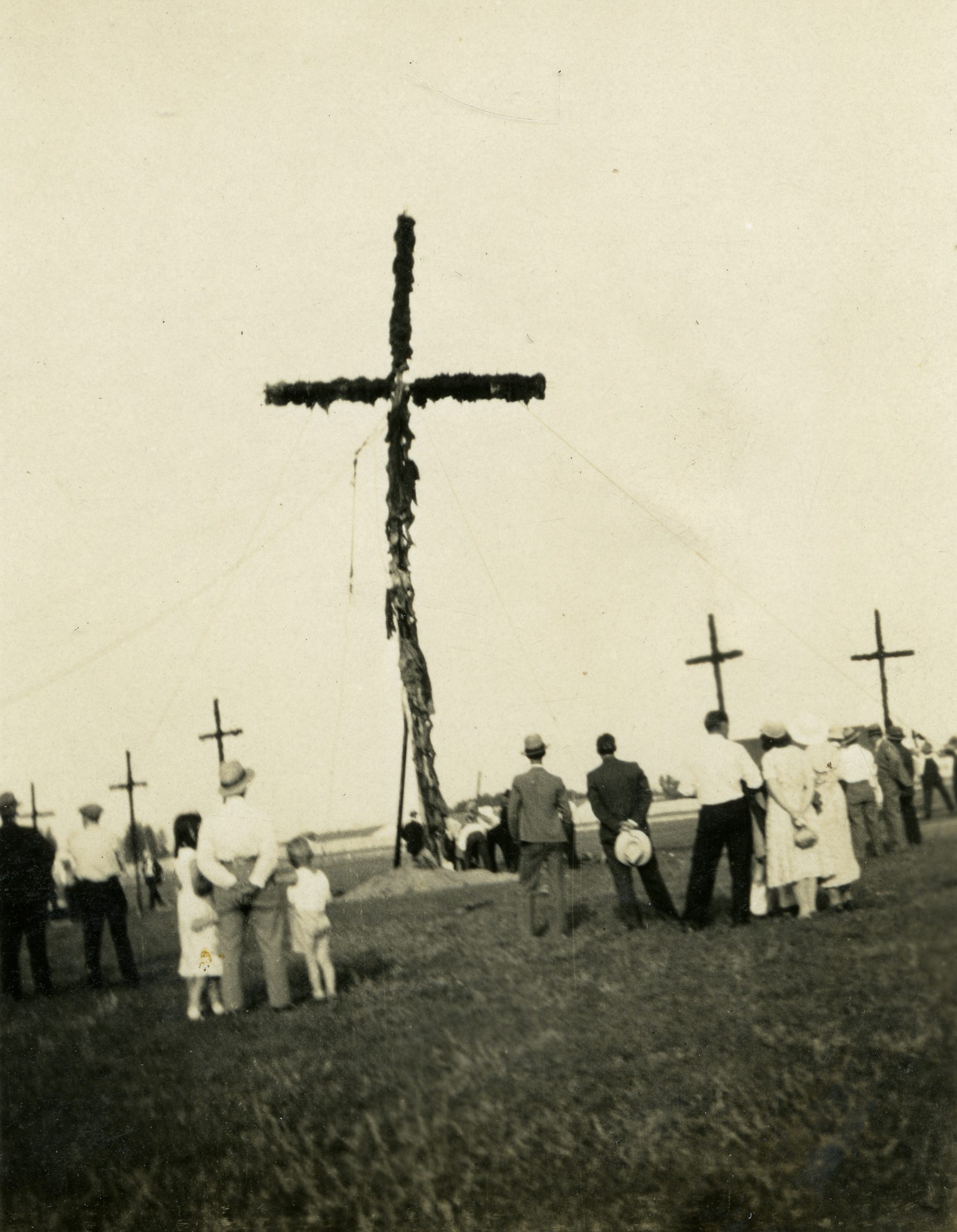Whenever economic times get tough, people often react with anger and frustration.
Generally, the initial targets of that discontent are politicians and any group which seems to be weathering the hard times with relative ease.
However, when the economic hardships become especially severe, or when the downturn lasts for an extended period of time, anger and bitterness can spread towards others who have nothing to do with the economic malaise.
That was certainly the case in Central Alberta during the Great Depression of the 1930s.
As the economic crisis continued to grow, people became more desperate to find causes and solutions. Anger boiled over at anyone that people didn’t like or that they mistrusted.
In Central Alberta, the deeply-felt fury manifested itself in the appearance of the Ku Klux Klan.
Actually, elements of the K.K.K. existed in western Canada before the start of the Great Depression.
The fledgling Klan joined in the campaign against the long standing Saskatchewan Liberal government. When the government fell in the 1929 election, the Klan and allied groups felt a surge of success and empowerment.
Much of the Klan activity was focused against Roman Catholics. There were only a handful of blacks and Asians across the west – too few to be considered any kind of ‘real threat’.
Catholics were also a distinct minority, but had sufficient numbers to become a target. The fact that Quebec was largely Roman Catholic helped fuel the anti-Catholic feelings.
That was certainly the case in Red Deer. In the 1920s, there were no blacks or Jews in the community. However, there was a large Roman Catholic convent on the North Hill. As well, the Red Deer Separate (Catholic) School District had been created in 1909.
In November 1929, R.C. Snelgrove, a purported Klan organizer, spoke at a well-attended meeting in Red Deer. He denied any connection to the Klan, but still seemed to be very knowledgeable about it.
He claimed that there were already 240 Klansmen in Central Alberta and another 70 women supporters. However, he offered no proof, or explanation, as to how he would know that.
In March 1930, with the Depression deepening, J.J. Maloney, who freely admitted to being a Klan organizer, spoke at a series of four well-attended public meetings in Red Deer.
Maloney, who had been an active and committed Catholic as a young man, spoke with real vehemence against the Catholic Church.
A few hecklers challenged Maloney.
They were escorted from the hall by Red Deer’s Police Chief, who stated he was trying to maintain order. One local high school teacher, J.F. Swan, stood up and politely challenged Maloney’s ‘facts’.
When Maloney stated that he knew far more about the Church as an ex-Catholic, who had trained for the priesthood, the teacher replied that he knew about the church as well, since his brother was a priest.
After the meetings, there was strong pressure brought against the Public School District for employing a Roman Catholic. Swan was forced to resign from his job at the Red Deer High School and moved to Warner, Alberta, where he became a principal.
Immediately after the meetings, a cross was burned on the North Hill next to St. Joseph Convent.
Emotions ran high, but there was no violence during the incident. Consequently, no charges were laid by the police.
Shortly thereafter, William Clark, a farmer from Blackfalds, decided to speak out at public meetings in Red Deer and Lacombe organized to denounce the Klan.
A small group of local business people, and the editor of the Lacombe Globe, helped to underwrite the expenses. A small street brawl took place in Lacombe after that second meeting.
In June 1931, Maloney made another speaking tour through Red Deer and held six public meetings in the City. These were held in the old Red Deer Arena in order to handle the huge crowds, which numbered up to 1,000 per meeting. Once again, the local newspapers, the Red Deer Advocate and Lacombe Globe, attacked Maloney, his anti-Catholicism, and connection to the Klan.
However, the big impact that Maloney had made on the community could not be denied. Moreover, there were those who considered Maloney’s own newspaper, the Liberator, to be a more trusted source of information.
Since the Klan is a secret society, it is unclear when the local chapters folded. However, any outward evidence of activity waned by the mid-1930s.



